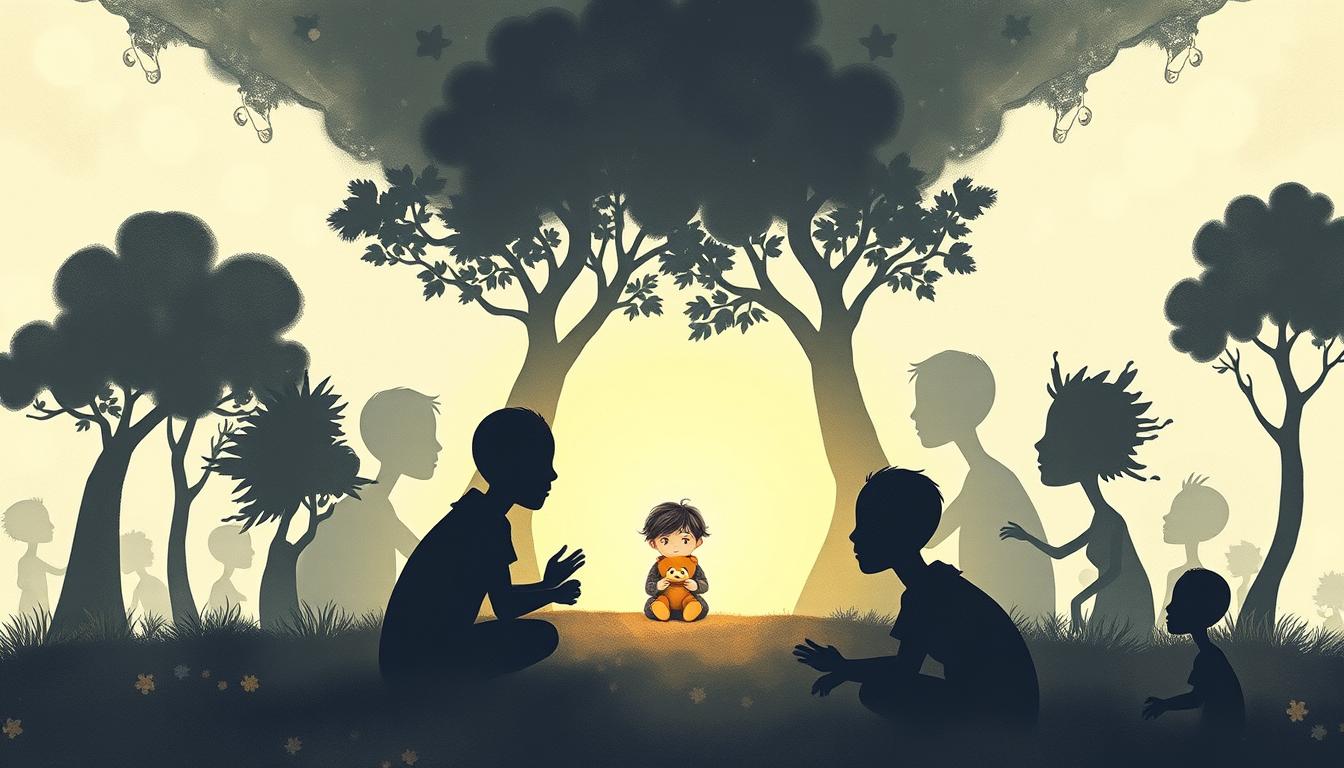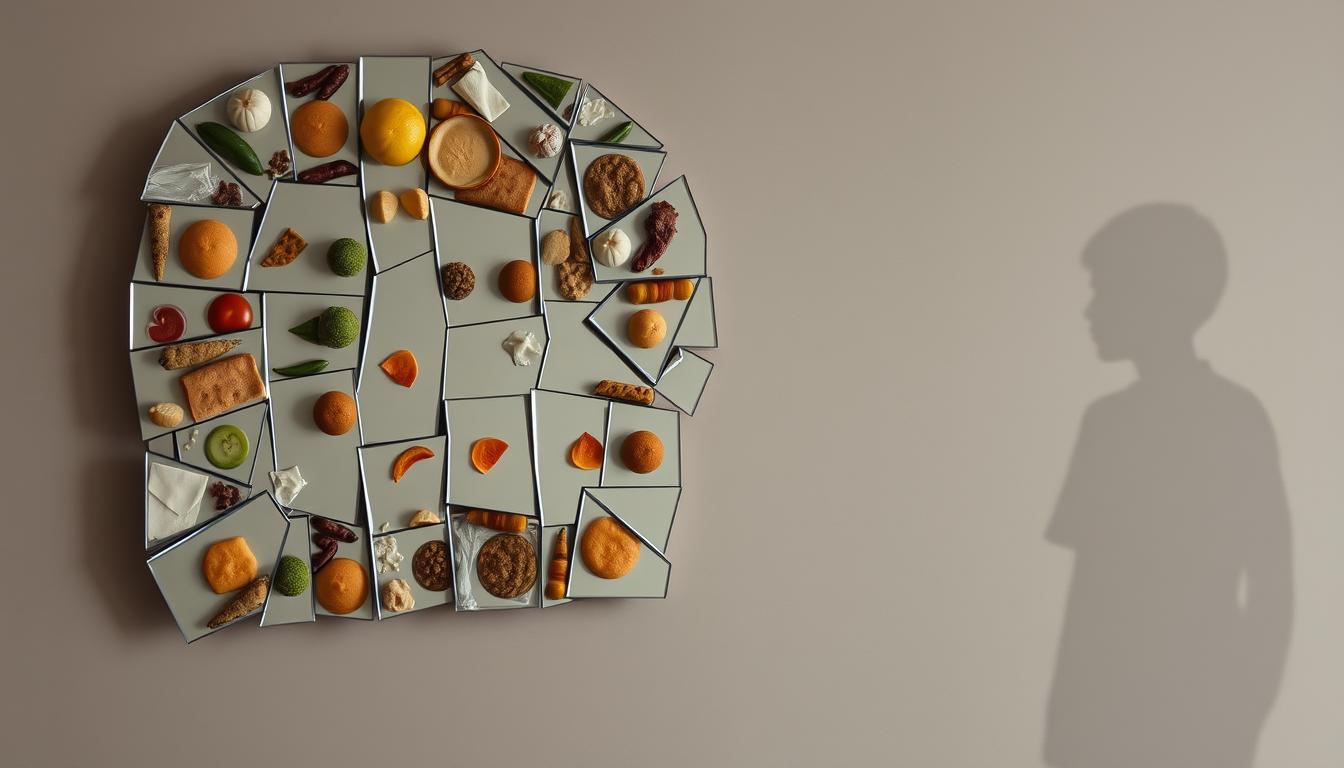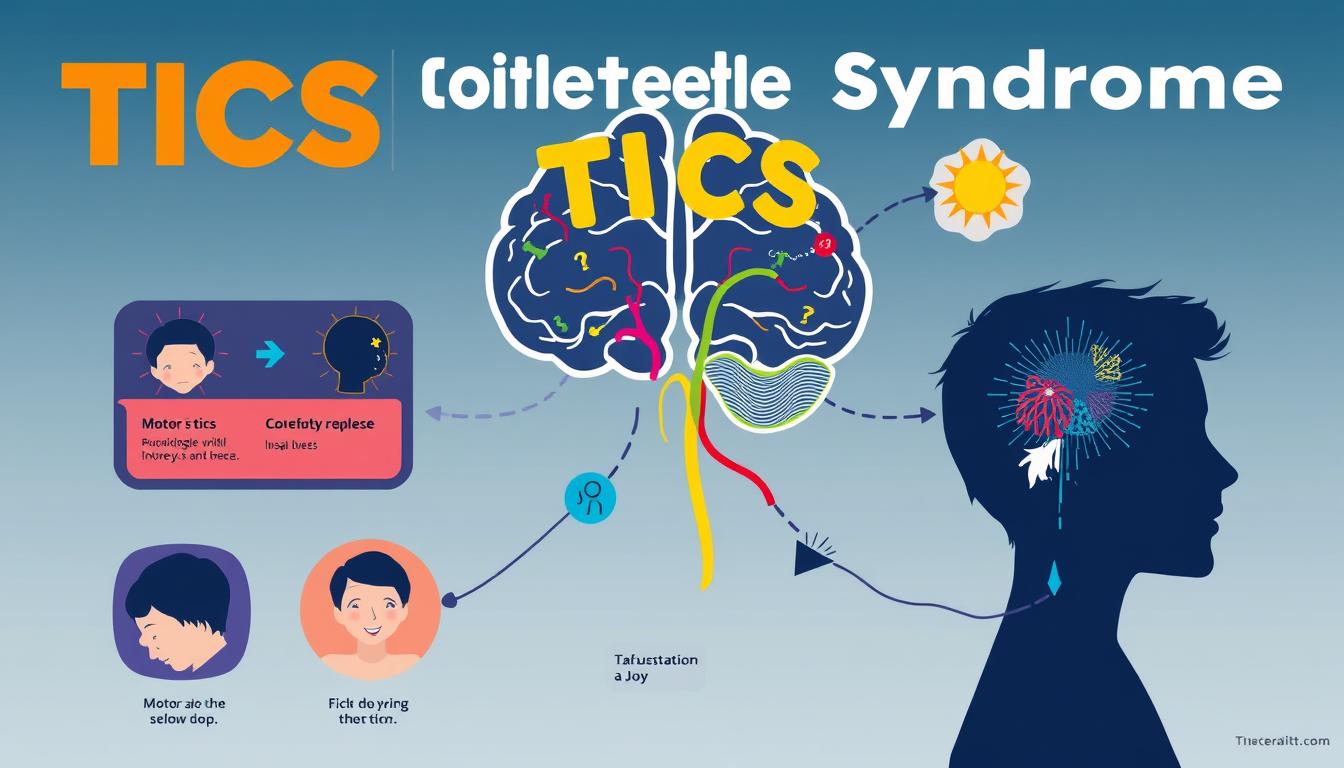Are your child’s worries getting in the way of their daily life? Childhood anxiety disorders are more common than you might think. They affect about 1 in 8 children. These conditions can include phobias and social anxiety, impacting a child’s growth and happiness.
But, with the right support and treatment, your child can face their fears and succeed. Let’s explore the types, symptoms, and ways to manage childhood anxiety together.
- Understanding Childhood Anxiety: Normal vs. Disorder
- Common Physical and Emotional Symptoms in Children
- Anxiety Disorders in Children: Types of Anxiety and Their Treatments
- Risk Factors and Causes of Childhood Anxiety
- Early Warning Signs: What Parents Should Watch For
- The Role of Parents in Managing Child Anxiety
- Professional Assessment and Diagnosis Process
- Cognitive Behavioral Therapy for Children
- Medication Options and Considerations
- School-Based Support and Accommodations
- FAQ
- What are the common types of anxiety disorders in children?
- How do I know if my child's anxiety is a normal childhood emotion or a disorder?
- What are the physical and emotional symptoms of anxiety in children?
- Can you describe the different types of anxiety disorders in children?
- What are the risk factors for childhood anxiety disorders?
- What are the early warning signs that my child may be experiencing an anxiety disorder?
- How can parents help manage their child's anxiety?
- When should I seek professional help for my child's anxiety?
- What are the evidence-based treatments for childhood anxiety disorders?
- How can schools support children with anxiety disorders?
Understanding Childhood Anxiety: Normal vs. Disorder
Anxiety is a natural emotion that helps kids get ready for challenges. It pushes them to work harder, practice more, and stay safe. But, if anxiety gets too much and stops kids from doing daily things, it might be a disorder.
Signs of Normal Childhood Anxiety
Normal anxiety in kids might be worrying about new schools or speaking up. These worries are okay and don’t stop kids from doing normal stuff.
When Anxiety Becomes a Disorder
Anxiety turns into a disorder when it really gets in the way of daily life. Kids with disorders might feel their heart racing or get really upset. This makes it hard for them to go to school or hang out with friends.
Impact on Daily Functioning
Anxiety disorders can make it hard for kids to do everyday things. They might miss school or not want to try new things. If anxiety lasts a long time, it’s likely a disorder.
| Symptom | Normal Anxiety | Anxiety Disorder |
|---|---|---|
| Frequency of Worries | Occasional, age-appropriate | Frequent, disruptive |
| Impact on Daily Life | Minimal disruption | Significant impairment |
| Duration of Symptoms | Temporary | Persistent over time |
| Avoidance Behaviors | Minimal | Significant |
Knowing the difference between normal anxiety and disorders helps parents support their kids. They can get help when needed.
Common Physical and Emotional Symptoms in Children
Childhood anxiety shows up in many ways. Kids with separation anxiety in children or social anxiety in youth might get stomachaches or headaches. They might also have trouble breathing or falling asleep.
These physical signs come from the body’s stress response. It’s like when you’re really scared or worried.
Emotionally, anxious kids can be very alert and react strongly to new places. They might avoid certain situations or have big meltdowns. They could also have trouble focusing or feel really worried all the time.
They might feel tense, have trouble sleeping, or eat less. It’s like their body and mind are on high alert all the time.
| Physical Symptoms | Emotional Symptoms |
|---|---|
|
|
Knowing these symptoms is key. They can really affect a child’s life. Getting help from a professional is very important.
“Anxiety in children is a normal and necessary part of development, but when it becomes excessive or interferes with daily life, it may be a sign of an anxiety disorder that requires professional intervention.”
Anxiety Disorders in Children: Types of Anxiety and Their Treatments
Anxiety disorders are common in kids and teens. About 15%–20% of young people have an anxiety disorder. This number can go up to 31.9% for those aged 13–18. It’s important to know the different types and treatments to help them.
Specific Phobias
Specific phobias are irrational fears of certain things or situations. For example, a child might fear dogs or crowds. These fears can stop them from doing everyday things.
Separation Anxiety Disorder
Separation anxiety disorder makes kids very worried when they’re away from their caregivers. They might get very anxious when leaving home or being in a different room. This can make it hard for them to be independent.
Generalized Anxiety Disorder
Generalized anxiety disorder makes kids worry a lot about different things. They might worry about school, family, or health. This worry can cause physical problems like headaches and stomachaches.
Social Anxiety Disorder
Social anxiety disorder makes kids very scared of being around others. They might think others will judge them. This can make it hard for them to make friends or join in activities.
Treatments for these disorders include cognitive-behavioral therapy (CBT) and sometimes medicine. Early help is key to reduce the impact of anxiety disorders.
| Anxiety Disorder | Description | Common Symptoms | Treatments |
|---|---|---|---|
| Specific Phobias | Irrational fears of objects or situations | Avoidance, distress, physical symptoms | CBT, exposure therapy |
| Separation Anxiety Disorder | Excessive worry about being apart from caregivers | Crying, clinging, physical symptoms | CBT, parent-child therapy |
| Generalized Anxiety Disorder | Persistent, excessive worry about various aspects of life | Headaches, stomachaches, muscle tension | CBT, medication (SSRIs, SNRIs) |
| Social Anxiety Disorder | Intense fear and avoidance of social situations | Avoidance, blushing, trembling | CBT, exposure therapy |
Phobias in young ones and obsessive-compulsive disorder in minors are common. Early treatment is key to help kids manage their anxiety and succeed.
Risk Factors and Causes of Childhood Anxiety
Childhood anxiety disorders can really affect a child’s life. It’s important to know what causes them. Several key factors help us understand why some kids get anxious.
Having a family member with anxiety is a big risk. Kids with anxious parents or siblings are more likely to feel anxious too. Stressful events, like moving a lot or losing a loved one, can also make a child anxious.
Children with ADHD or autism are more likely to have anxiety. This shows that both genes and environment play a part in anxiety.
Studies have found that being shy or having certain temperaments can lead to anxiety. Conflict with parents, anxious parents, and tough times in infancy can also raise anxiety risks.
Childhood anxiety comes from a mix of the child, parents, and environment. Knowing these risks helps us help kids at risk. Parents, teachers, and doctors can work together to prevent and treat anxiety.
“Early intervention and a supportive environment are crucial in helping children overcome anxiety disorders and develop the coping skills they need to thrive.”
Early Warning Signs: What Parents Should Watch For
As a parent, it’s important to watch for early signs of anxiety in your kids. These signs can show up in different ways, like changes in behavior or physical symptoms. Catching these signs early helps you get help for your child sooner.
Behavioral Changes
Look out for signs like irritability, trouble focusing, and avoiding certain places. Your child might also have trouble sleeping, eating, or making friends. Watch for constant worrying, needing to be close to you, and trouble separating.
Physical Symptoms
Anxiety can cause physical problems like stomachaches, headaches, or feeling uneasy. These issues can make it hard for your child to do everyday things or go to school.
Academic Impact
Anxiety can also affect schoolwork. You might see your child refusing to go to school, getting lower grades, or not wanting to join in class. Trouble focusing and remembering things can also be signs of anxiety.
It’s crucial to notice these signs early and get help. With the right support, your child can manage their anxiety and do well in all areas of life.
Remember, catching anxiety early is key. Stay alert, talk openly with your child, and seek help from mental health experts. They can guide you and support your child.
The Role of Parents in Managing Child Anxiety
As a parent, you are key in helping your child deal with anxiety. You can offer support, understanding, and the right help. It’s vital to talk about their anxiety and not make them feel worse by avoiding things.
Helping your child face their fears little by little is a good idea. This way, they learn to handle scary situations in a safe place. Also, teaching them how to breathe deeply or use their imagination can help them feel better.
Showing calm when you’re stressed is also important. When you stay calm, your child learns how to do the same. This helps them find ways to deal with their own anxiety.
Don’t forget to get help when you need it. Working with child therapists or counselors can give your family the tools to fight anxiety treatment for kids. These experts can teach cognitive-behavioral therapy for child anxiety and more, based on what your child needs.
“The role of parents in managing child anxiety cannot be overstated. By providing a supportive and nurturing environment, parents can help their children develop the skills and resilience needed to overcome anxiety.”
Managing child anxiety is a team effort. Working with your child, their school, and mental health experts can help a lot. Together, you can make a strong support system for your child to succeed, even with anxiety.
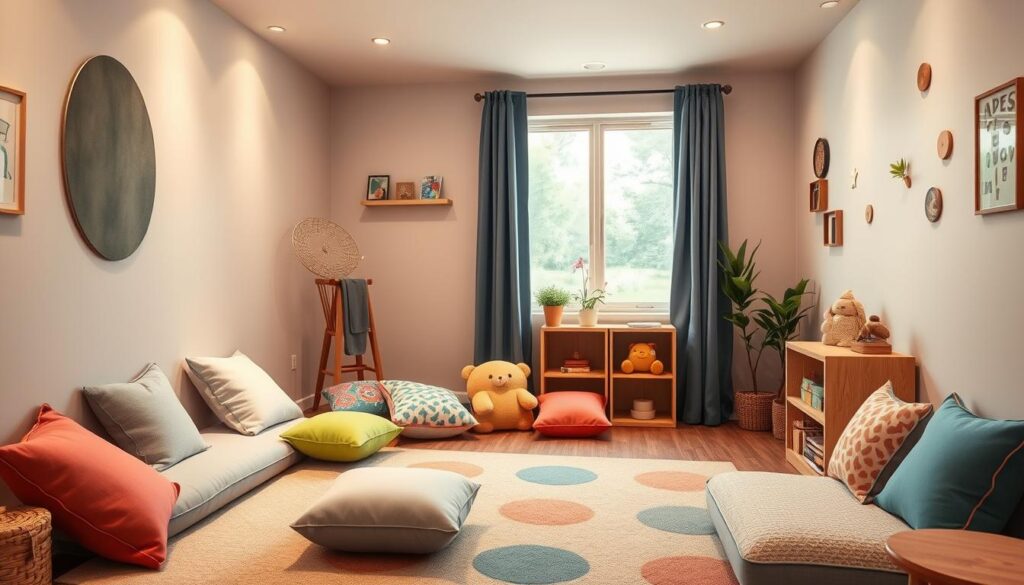
| Key Strategies for Parents | Benefits |
|---|---|
|
|
Professional Assessment and Diagnosis Process
If your child is struggling with anxiety that affects their daily life, it’s time to get help. A child psychiatrist or psychologist can offer a detailed evaluation. They will help find the right treatment for your child.
When to Seek Professional Help
Anxiety in kids is becoming more common. It affects about 31.9% of teens between 13 and 18. Over the last 30 years, childhood anxiety has doubled. If your child’s anxiety is getting worse or affecting their daily life, it’s important to see a professional.
What to Expect During Evaluation
A mental health expert will do a thorough assessment. They will ask about your child’s symptoms, medical history, and family background. Tools like the Screen for Child Anxiety Related Disorders (SCARED) or the Spence Children’s Anxiety Scale might be used. This helps create a treatment plan that fits your child’s needs.
Getting professional help is key to addressing your child’s anxiety. The evaluation gives the insights needed for effective care. It ensures your child gets the support they need to overcome their challenges.
Cognitive Behavioral Therapy for Children
If your child is struggling with anxiety, cognitive-behavioral therapy (CBT) can help. CBT is a proven method that helps kids change negative thoughts and behaviors. It uses techniques like exposure therapy and relaxation to help them manage anxiety.
Studies show CBT is very effective for kids with anxiety. It can help with specific phobias, separation anxiety, and more. In fact, about two-thirds of kids see big improvements in just 12-16 weeks.
CBT is a top choice for treating childhood anxiety treatment. It’s been shown to work better than waiting for treatment. For every 3 kids who get CBT, 1 will no longer have anxiety.
CBT can be done one-on-one or in groups. Parents often play a big role in the process. Together, kids learn to face their fears and develop coping skills.
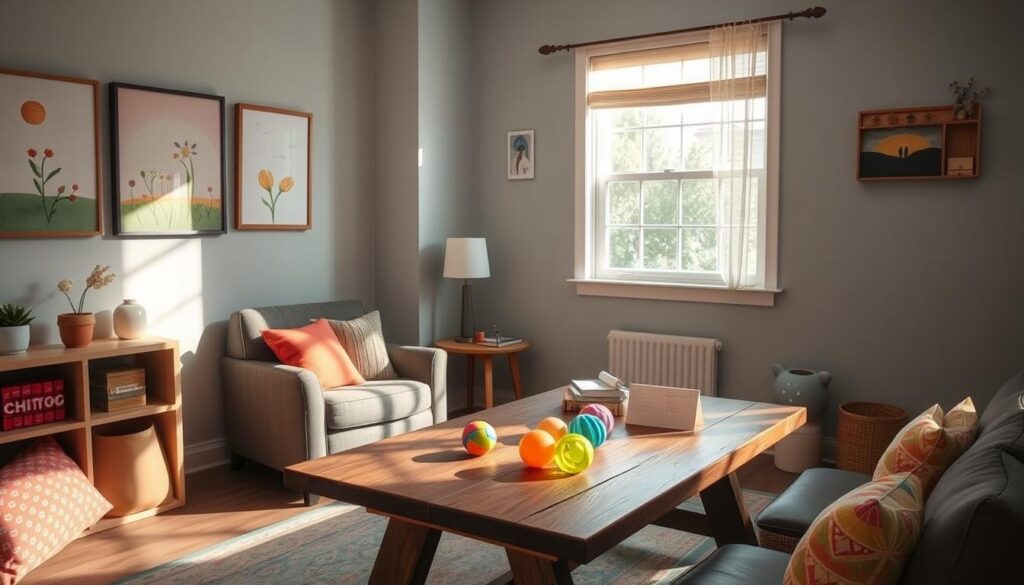
The journey through CBT requires hard work from everyone involved. But the results can change a child’s life. By tackling the root of their anxiety, kids can regain control and confidence. If your child is anxious, CBT could be a game-changer as a proven anxiety treatment for kids.
Medication Options and Considerations
Medication is a key part of treating anxiety in kids. It works best when used with other treatments. The main medicines for anxiety treatment for kids are SSRIs and SNRIs. These are often given by experts in child mental health.
SSRIs and SNRIs
SSRIs like sertraline and citalopram are often used. They help control serotonin levels, which is important for mood. SNRIs target serotonin and norepinephrine, helping with stress.
Safety Considerations
These medicines can help but may have side effects. Common ones include trouble sleeping, feeling anxious, and stomach issues. Anti-anxiety drugs like alprazolam can also be used but may cause tiredness and dizziness.
Monitoring Progress
Choosing medication for medication for childhood anxiety needs a doctor’s advice. It’s based on how bad the symptoms are and the risks and benefits. Regular check-ups are key to see how well the treatment is working.
Doctors usually see patients every two weeks or a month. They adjust the dose and watch for side effects. This makes sure the child’s health is the top priority.
| Medication Type | Common Examples | Potential Side Effects |
|---|---|---|
| SSRIs | Sertraline, Paroxetine, Citalopram | Insomnia, Anxiety, Nausea, Diarrhea |
| Anti-Anxiety Medications | Alprazolam, Clonazepam | Fatigue, Dizziness |
| Beta Blockers | Propranolol | Cold Hands, Headaches, Upset Stomach, Constipation |
Knowing about the medicines for anxiety treatment for kids helps parents and doctors. They can find the best way to manage anxiety in children together.
School-Based Support and Accommodations
If your child has anxiety or social anxiety, schools can help a lot. They can create a 504 plan to support them. This plan helps them do well in school.
Schools must help if a child’s anxiety affects their daily life. They might offer a quiet area, breaks, or extra time for tests. This helps kids with mental health issues.
It’s important for parents, teachers, and counselors to work together. Parents should keep records of talks about their child’s needs. This way, kids with anxiety can do well in school and with friends.

